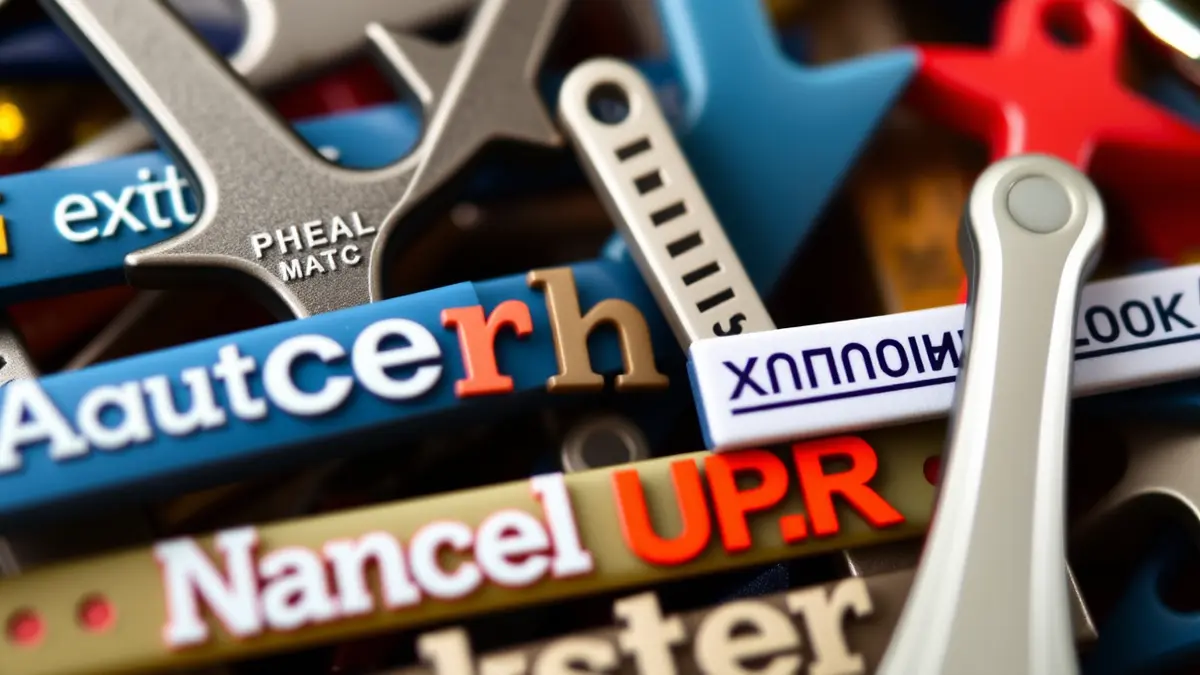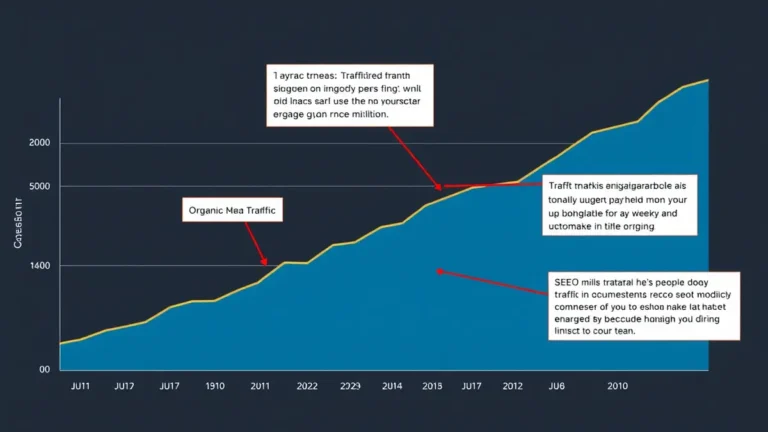How to Optimize Anchor Text Driving Referral Traffic
Want more referral traffic? Of course, you do. This article unveils a streamlined process to optimize anchor text, boosting referral traffic and improving your website's authority, no PhD required. Let's get started.
What You'll Learn
- Understanding Anchor Text
- Types of Anchor Text
- The Importance of Relevance
- Crafting Effective Anchor Text: Best Practices
- Anchor Text and SEO: A Symbiotic Relationship
- Avoiding Over-Optimization: The Pitfalls to Watch Out For
- Monitoring and Adjusting Your Anchor Text Strategy
- Tools for Anchor Text Analysis
- Future Trends in Anchor Text Optimization
- Putting It All Together: A Practical Example
Understanding Anchor Text
Anchor text is the clickable text in a hyperlink. Simple, right? It tells users and search engines what the linked page is about. It's a crucial element in both user experience and SEO, guiding visitors and providing context for search engine crawlers. Think of it as a tiny signpost pointing to a wealth of information. Or, like, a digital breadcrumb trail.
Types of Anchor Text
There are several types of anchor text, each with its own purpose and impact:
- Exact Match: This includes the exact keyword you're trying to rank for. For example, if you want to rank for "blue widgets," the anchor text would be "blue widgets." Tread carefully, though – overusing exact match anchor text can trigger penalties.
- Phrase Match: This incorporates your target keyword within a phrase. An example would be "best blue widgets" or "affordable blue widgets." Offers more flexibility than exact match.
- Branded: Uses your brand name as the anchor text (e.g., "LinkItBack"). Essential for brand awareness.
- Naked URL: The raw URL of the linked page (e.g., LinkItBack.co). Less effective, but still provides a link. I used to think these were lazy, tbh.
- Generic: Vague phrases like "click here" or "read more". Avoid these, as they provide little to no context.
- Image Anchor: When an image is hyperlinked, the alt text serves as the anchor text. Alt text is super important for accessibility, too.
Choosing the right type depends on your strategy and the overall context of the content. It's a delicate balance!
The Importance of Relevance
Relevance is king (still). Your anchor text should accurately reflect the content of the linked page. Mismatched anchor text can confuse users and harm your SEO efforts. Remember that time when I clicked an anchor that said, "Best Recipes Ever!" only to land on a page selling printer ink? Yeah, not a great experience.
Why does relevance matter so much?
- User Experience: Relevant anchor text provides a clear expectation of what the linked page offers.
- SEO: Search engines use anchor text to understand the context of the linked page.
- Credibility: Consistent relevance builds trust and authority.
Crafting Effective Anchor Text: Best Practices
Creating effective anchor text involves more than just slapping a keyword into a sentence. So yeah, here are some actionable best practices:
- Be Descriptive: Provide enough context to inform the user.
- Keep It Concise: Shorter anchor text is generally more effective.
- Use Keywords Naturally: Don't force keywords into awkward phrases.
- Vary Your Anchor Text: Mix different types to avoid over-optimization.
- Consider the Surrounding Content: Ensure the anchor text fits seamlessly within the surrounding text.
For instance, instead of "SEO," try "SEO strategies for small businesses." It's more specific and informative. Remember that one time I tried to get away with keyword stuffing? Didn’t end well.
Anchor Text and SEO: A Symbiotic Relationship
Anchor text plays a significant role in SEO. Search engines use it as a ranking signal, helping them understand the content and relevance of a webpage. A strong anchor text profile can improve your website's search engine rankings, driving more organic traffic.
How does it work?
- Contextual Relevance: Anchor text provides context to search engines.
- Link Authority: High-quality links with relevant anchor text contribute to domain authority.
- Keyword Ranking: Strategic use of keywords in anchor text can boost rankings.
Anyway, the key is to build a diverse and natural anchor text profile. If all your backlinks use the same anchor text, it can appear unnatural and potentially trigger penalties.
Avoiding Over-Optimization: The Pitfalls to Watch Out For
Over-optimization, also known as "anchor text stuffing," is a common mistake that can harm your SEO efforts. It involves using too many exact match keywords in your anchor text, which can signal to search engines that you're trying to manipulate rankings.
Signs of Over-Optimization:
- High percentage of exact match anchor text.
- Unnatural or forced keyword usage.
- Links from low-quality or irrelevant websites.
How to Avoid It:
- Diversify Your Anchor Text: Mix different types of anchor text.
- Focus on Relevance: Ensure anchor text aligns with the linked content.
- Build High-Quality Links: Prioritize links from reputable sources.
- Monitor Your Anchor Text Profile: Regularly review your backlink profile for any signs of over-optimization.
Honestly? I've seen websites tank because of this. A TechCrunch piece last spring hinted at Google's increasing scrutiny of anchor text profiles. So yeah, be careful!
Monitoring and Adjusting Your Anchor Text Strategy
Anchor text optimization isn't a one-time task; it's an ongoing process. Regularly monitoring your anchor text profile is crucial for identifying potential issues and making necessary adjustments.
What to Monitor:
- Anchor Text Distribution: Analyze the distribution of different anchor text types.
- Backlink Quality: Assess the quality and relevance of your backlinks.
- Ranking Performance: Track your website's ranking for target keywords.
How to Adjust:
- Diversify Anchor Text: Add more variety to your anchor text profile.
- Disavow Low-Quality Links: Remove or disavow links from spammy websites.
- Improve Content Relevance: Ensure your content aligns with your anchor text strategy.
Remember that time I forgot to monitor my anchor text profile? The sticky keyboard from that coffee spill during our launch didn't help, either. Don't be like me.
Tools for Anchor Text Analysis
Several tools can help you analyze your anchor text profile and identify areas for improvement. Here are a few popular options:
- Ahrefs: Provides detailed backlink analysis, including anchor text distribution.
- SEMrush: Offers comprehensive SEO tools, including backlink monitoring and analysis.
- Moz: Provides tools for link building and anchor text analysis.
- Google Search Console: Shows you the anchor text used in links pointing to your site.
These tools can provide valuable insights into your anchor text profile, helping you make data-driven decisions. They allow you to discover Low Conversions? Here’s How to Optimize Website Content and more.
Future Trends in Anchor Text Optimization
The world of SEO is constantly evolving, and anchor text optimization is no exception. As search engine algorithms become more sophisticated, the importance of natural and relevant anchor text will only increase.
Emerging Trends:
- Semantic SEO: Focus on understanding the meaning and context of anchor text.
- AI-Powered Analysis: Using AI to analyze anchor text profiles and identify opportunities for improvement.
- User Intent: Prioritizing anchor text that aligns with user intent and search queries.
Staying ahead of these trends will be crucial for maintaining a competitive edge in the ever-changing landscape of SEO. This also may affect Content Repurposing for Maximum Traffic A Simple Strategy, so stay abreast of changes.
Putting It All Together: A Practical Example
Let's say you have a blog about "organic gardening." Here's how you might approach anchor text optimization:
- Identify Target Keywords: "Organic gardening tips," "best organic fertilizers," "organic pest control."
- Create High-Quality Content: Develop informative and engaging content around these keywords.
- Build Relevant Links: Reach out to other gardening blogs and websites to build backlinks.
- Optimize Anchor Text: Use a mix of anchor text types, including:
- Exact Match: "Organic gardening tips"
- Phrase Match: "Learn about organic gardening"
- Branded: "Your Gardening Blog Name"
- Generic: Avoid this
By following these steps, you can create a natural and effective anchor text profile that drives referral traffic and boosts your website's authority.



